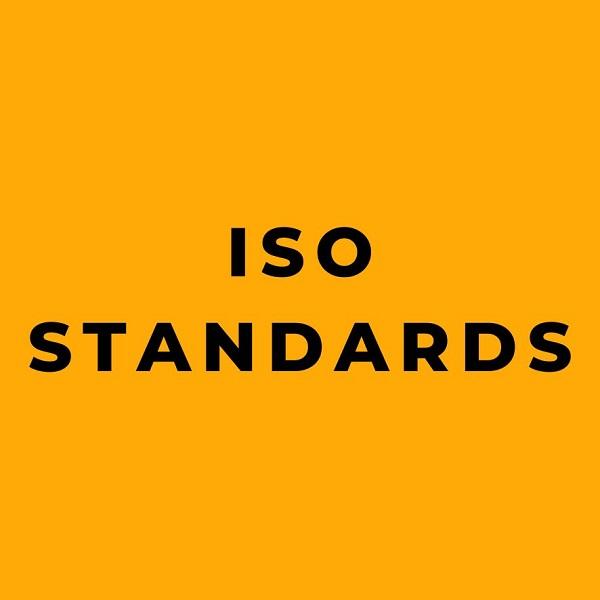Introduction
International Organization for Standardization (ISO) standards provide frameworks and guidelines for quality management, environmental protection, information security, and more. Adopting ISO standards can help businesses enhance efficiency, reduce costs, and gain credibility on a global scale. With over 22,000 international standards published, ISO standards impact nearly every industry. Understanding the purpose of standards, the certification process, and how to maintain compliance will allow companies to fully leverage these frameworks for strategic advantage.
Most standards published by ISO are voluntary, meaning they are not mandated by law. However, certification is often expected or required by industry regulations and customers. The most well-known standards published by ISO include the ISO 9000 family focused on quality management, the ISO 14000 family centered on environmental management, and ISO/IEC 27001 for information security.
The primary benefit of ISO standard adoption is the establishment of efficient, uniform processes based on international consensus. This promotes seamless integration between organizations across industry sectors and geographic borders. ISO standards also provide a comprehensive framework for training employees, evaluating operations, and prioritizing improvements. Certification signifies that a company’s management system complies with globally recognized standards for quality, sustainability, safety or other parameters. This level of credibility and trust can be a competitive differentiator.
Most Popular ISO Standards
ISO 9001 is by far the most widely adopted ISO standard, with over 1 million certificates issued worldwide. This standard outlines requirements for quality management systems (QMS) focused on consistently meeting customer expectations and statutory regulations. Adherence demonstrates the ability to provide products and services with superior quality. ISO 9001 certification requires extensive internal process evaluation and documentation. Companies must show a commitment to continuous assessment and improvement.
ISO 14001 specifies standards for effective environmental management systems (EMS). It provides guidance for measuring environmental impact, implementing greener initiatives, and steadily reducing ecological footprints. An EMS meeting ISO 14001 standards reflects social responsibility and sustainable growth. Over 300,000 organizations worldwide have obtained ISO 14001 certification.
Another widely adopted standard is ISO/IEC 27001 for information security management. It outlines specifications for securing sensitive company and customer data. An ISO 27001 compliant information security management system (ISMS) shows investment in robust cybersecurity policies, procedures, and protections.
Implementing ISO Standards
The first steps when implementing an ISO standard are to thoroughly research the requirements, establish a project team, and develop an implementation roadmap. Core team members should represent all business areas impacted. Next, compare current workflows and procedures against the specifics of the standard. Identify gaps that need remediation through updated protocols, staff training, and introduction of new tools or technologies.
When initiating an ISO 9001 QMS, ISO 14001 EMS or ISO 45001 occupational health and safety management system (OH&SMS), there are four key stages:
- Plan – Establish objectives, processes, resources and timeframes
- Do – Implement planned changes, train staff, document procedures
- Check – Assess results, monitor performance, conduct audits
- Act – Take action to continually improve
This PDCA cycle should become ingrained in daily operations, driving ongoing enhancement.
Management must ensure adequate resource allocation for successful implementation. Realistic timelines are necessary to avoid business disruption. Many organizations work with ISO consultants for guidance leveraging their expertise navigating certification processes.
Benefits of ISO Certification
The most impactful benefit is the trust and preference certification brings from prospective and established customers. ISO standards are globally recognized seals of approval. Certification demonstrates commitment to quality, safety, sustainability and information security.
Additional advantages include:
- Increased efficiency through established best practices and reduced errors
- Improved consistency through standardized processes
- Enhanced customer satisfaction through continuous improvement initiatives
- Higher employee engagement through training and input opportunities
- Compliance with regulations through rigorous protocols
- Reduced costs related to waste, defects, and operational redundancies
- Recognition as an industry leader, which can provide a competitive edge
- Ability to bid on contracts that require certification
- Increased international marketability due to global ISO standardization
The benefits apply across business areas, creating an organizational culture of quality. Independent ISO audits also provide an objective assessment to guide refinements.
ISO Standards in Different Industries
While ISO standards provide general frameworks, they are designed to integrate within diverse industries. Some specialized examples include:
- ISO 13485 – Quality Management for Medical Devices
- ISO/TS 16949 – Quality Management for Automotive Sector
- ISO/IEC 27018 – Information Security in the Cloud
- ISO 28000 – Supply Chain Security Management
- ISO 50001 – Energy Management
Industry-specific ISO standards incorporate unique regulatory, testing, validation, and risk requirements. For instance, ISO 13485 expands ISO 9001 quality guidelines for medical device safety and efficacy. ISO/TS 16949 adds automotive sector nuances like production part approval, warranty management, and customer-specific requirements.
These tailored standards allow organizations to adopt internationally recognized practices designed for their particular field. Industry groups are engaged in the creation and evolution of these standards to reflect current needs.
ISO Standards and Regulatory Compliance
ISO standards are designed to support regulatory compliance through rigorous controls and transparency. While ISO certification itself may not fully meet legal or statutory obligations, it lays the groundwork for higher levels of compliance.
For example, ISO 14001 environmental management standards help fulfill legal responsibilities outlined in environmental regulations. ISO 45001 contains provisions supporting occupational health and safety administration requirements. ISO 13485 aligns with risk management mandated by medical device quality system regulations.
In some cases, certification is an explicit prerequisite. The European Union’s Restriction of Hazardous Substances Directive requires ISO 14001 certification for companies dealing with electrical and electronic equipment waste.
Overall, the systematic approach of ISO standards eases navigation of complex regulatory landscapes. Ongoing reviews and audits provide independent verification that supports compliance efforts.
Maintaining and Improving ISO Certification
To retain certification, organizations must prove continual adherence to ISO standards through rigorous internal and external audits. After initial certification, surveillance audits are conducted at least annually by accredited third-party ISO auditors. Companies must also perform regular self-assessments and improvement reviews.
Internal audits verify that management systems continue to meet requirements. Audit findings enable preventive and corrective actions that enhance processes. Input from customers and employees during audits reveals additional improvement opportunities.
Management reviews analyze system performance and changes that could impact compliance or efficiency. Innovation opportunities and new technologies may also be evaluated. Reviews occur at least once annually for each ISO standard.
This engrains regular evaluation in organizational culture. Over time, ISO standards transform into intuitive best practices rather than a forced compliance checklist. A focus on continual improvement ultimately enhances customer satisfaction, along with business performance.
ISO Standards and the Future
Emerging trends like sustainability, connected technology, and customized experiences are influencing ISO priorities. Recently published and upcoming standards under development reflect these shifts.
For instance, ISO 50001 energy management standards grew rapidly due to the global focus on carbon footprints. ISO 23301 provides guidance on implementing blockchain technologies. ISO 23302 addresses tailoring product and service configurations to individual consumer preferences.
Artificial intelligence, robots, autonomous vehicles, biometric security, smart cities and other innovations spur additional ISO standards development. These standards aim to maximize benefits of new technologies while managing risks.
Globalization, expanded public awareness, and increased regulation also impact standards. ISO regularly reviews existing standards and introduces new ones to address evolving landscapes.
For any business, keeping current with relevant ISO standards grants access to the latest internationally recognized frameworks. Early adoption enables companies to become leaders rather than laggards. Partnering with accredited registrars simplifies navigating regular changes. A proactive approach keeps management systems aligned with both customer needs and global trends.
In today’s interconnected world, ISO standards provide roadmaps designed by international experts. Following these collectively developed routes allows organizations to continually enhance processes while exceeding expectations. The flexibility of ISO standards enables adoption across diverse industries and geographic regions. Committing to sustained improvement and rigorous audits instills an agile culture adept at capitalizing on shifts. For any organization pursuing global recognition and success, ISO standards represent comprehensive and strategic tools.
Sources:
- ISO Official Website: ISO Official Website
- Benefits of ISO Standards: Benefits of ISO Standards
- Four Steps to Implement an ISO Management System: Four Steps to Implement an ISO Management System
- ISO 9000 Family: ISO 9000 Family
- What are ISO Standards: What are ISO Standards
- Benefits of a Quality Management System: Benefits of a Quality Management System
- Management System Standards: Management System Standards
- Types of ISO Standards: Types of ISO Standards
- Benefits of ISO 9001 Certification: Benefits of ISO 9001 Certification
- ISO 9001 and Related Standards: ISO 9001 and Related Standards
- What is the ISO: What is the ISO
- Benefits of International Standards ISO: Benefits of International Standards ISO
- Implementation Guidance for ISO 9001:2015: Implementation Guidance for ISO 9001:2015
- ISO Introduction: ISO Introduction
- 5 Benefits of Having an ISO Certification: 5 Benefits of Having an ISO Certification
- How To Implement ISO 9001 (In 8 Steps): How To Implement ISO 9001 (In 8 Steps)










